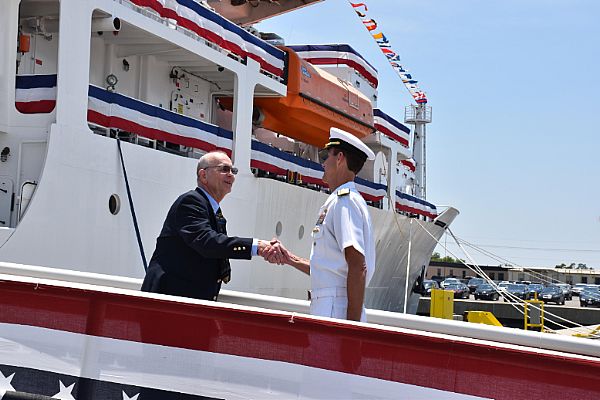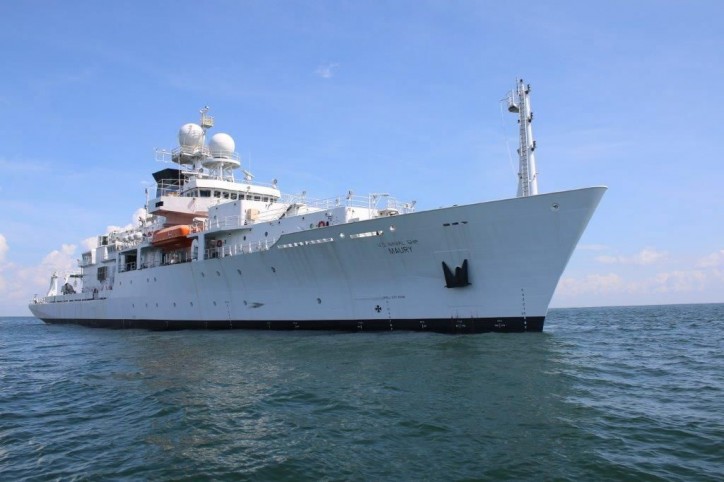The Navy's newest oceanographic survey vessel, USNS Maury (T-AGS 66), recently completed its maiden voyage from Pascagoula, Mississippi, where it was constructed at VT Halter Marine, to Port Everglades near Ft. Lauderdale, Florida.
In Maury's first days at sea, the civilian survey detachment from the Naval Oceanographic Office (NAVOCEANO) aboard performed initial testing of routine over-the-side operations as well as testing equipment unique to the ship, including underwater cameras which will be used for autonomous underwater vehicle (AUV) launch and recovery in the future.

Ed Gent, Naval Oceanographic Office engineer, greets Rear Adm. Timothy Gallaudet, commander of the Naval Meteorology and Oceanography Command and Oceanographer and Navigator of the Navy, as Gallaudet boards USNS Maury (T-AGS 66), the Navy's newest oceanographic survey ship - Image: US Navy
The survey detachment and ship's crew also held a wreath-laying ceremony to commemorate the Battle of Midway during the ship's first few days underway.
"USNS Maury is more than a simple addition to the existing fleet of T-AGS vessels; in the coming years, her unique capabilities will provide our surveyors the opportunity to support the warfighter using the latest and greatest technology, and ultimately lay the foundation for the next class of survey vessels," said NAVOCEANO Executive Officer, Capt. Nick Vincent.

Maury, named for Cmdr. Matthew Fontaine Maury, known as the "Pathfinder of the Seas" and father of modern oceanography, is the last of the Pathfinder-class oceanographic survey ships and is paving the way for a new class of ships better equipped to support AUV survey operations. The ship is 353-feet-long, 24 feet longer than the previous T-AGS design to accommodate a moon pool used for launch and recovery of AUVs and other oceanographic systems.
Maury is operated by Military Sealift Command and is technically controlled by NAVOCEANO for Commander, Naval Meteorology and Oceanography Command based at Stennis Space Center in southern Mississippi.
NAVOCEANO, comprised of approximately 800 military, civilian and contractor personnel, uses a variety of platforms -- including ships, aircraft, satellite sensors, buoys and unmanned underwater vehicles -- to collect oceanographic and hydrographic data from the world's oceans.
Source: US Navy